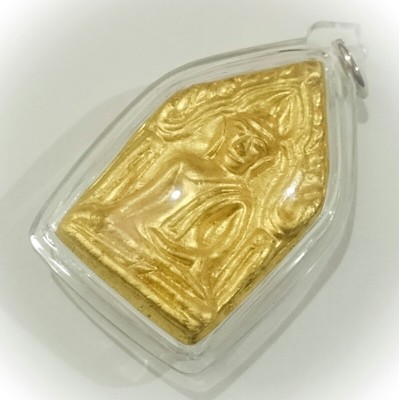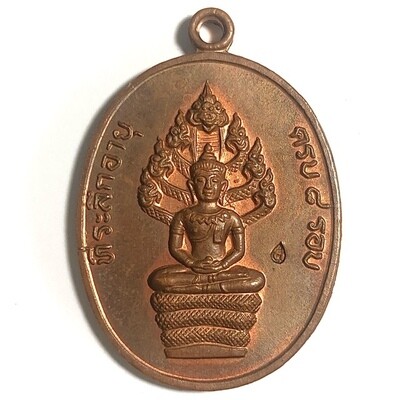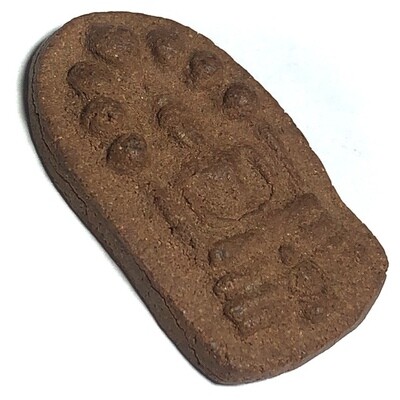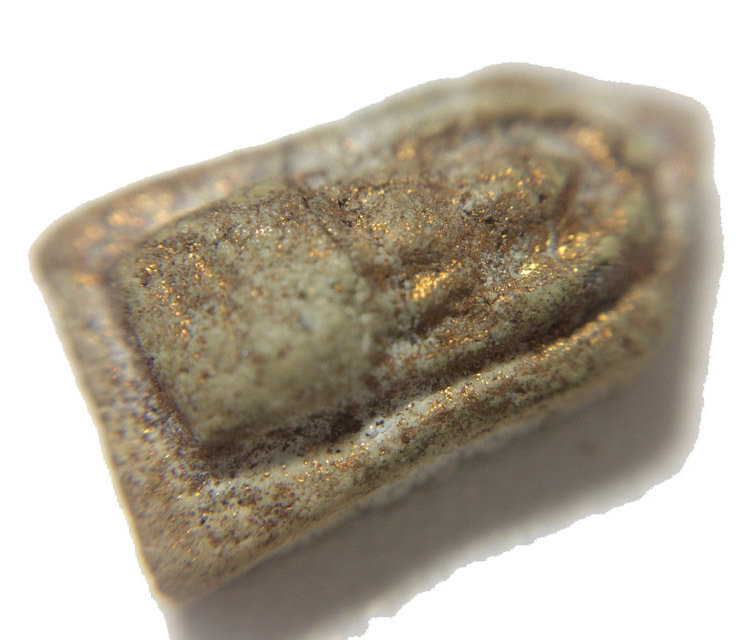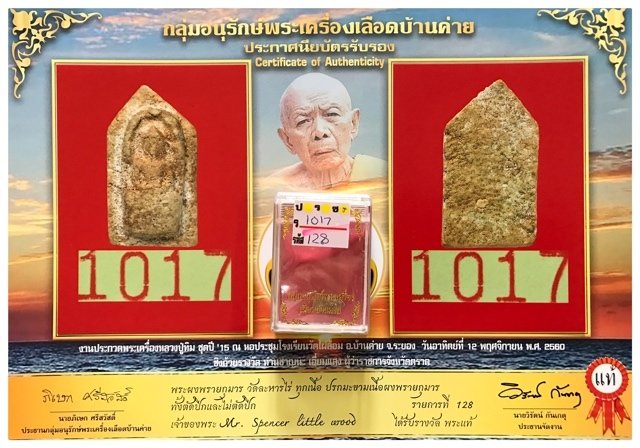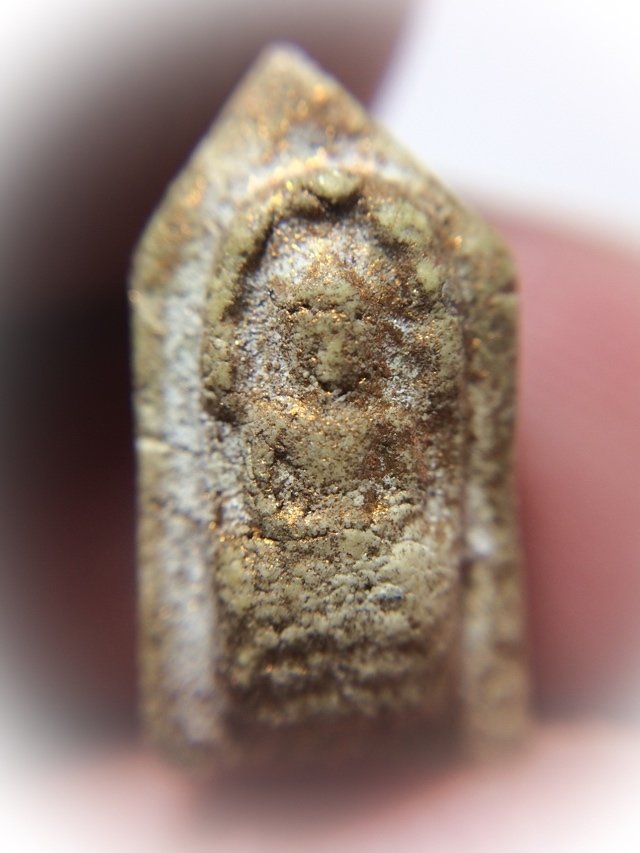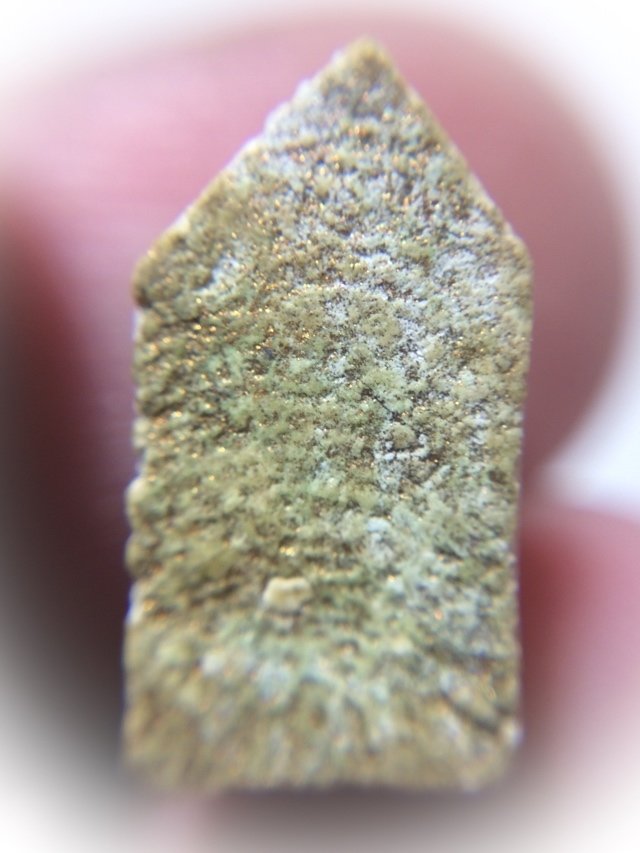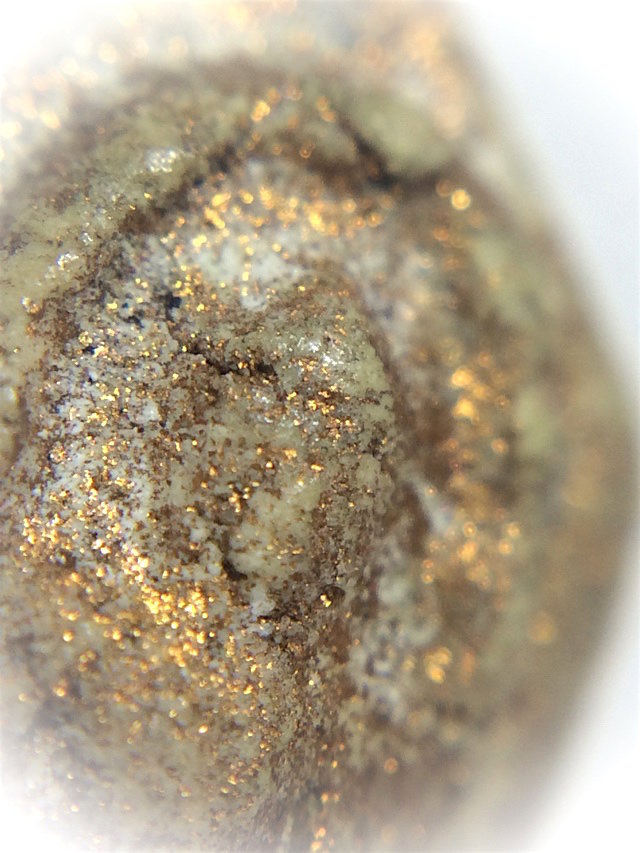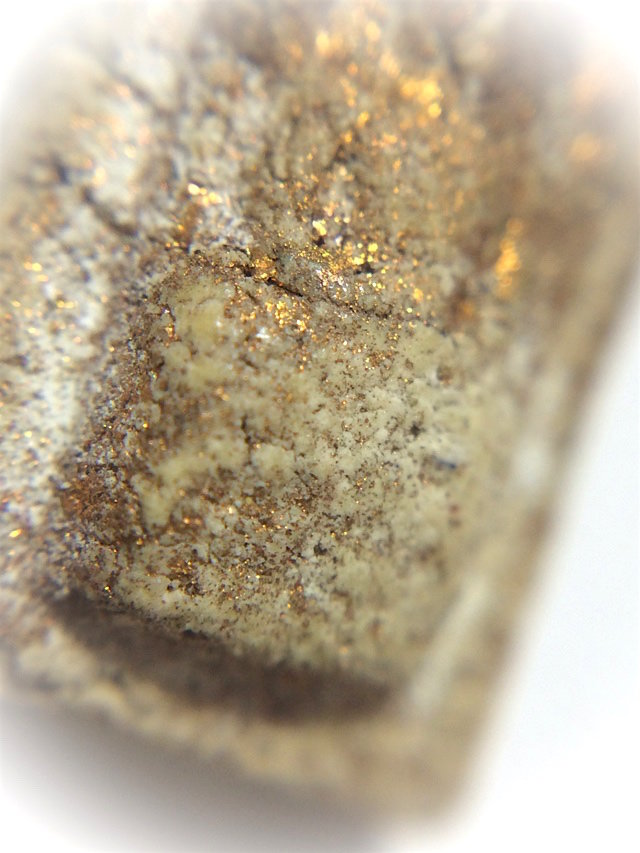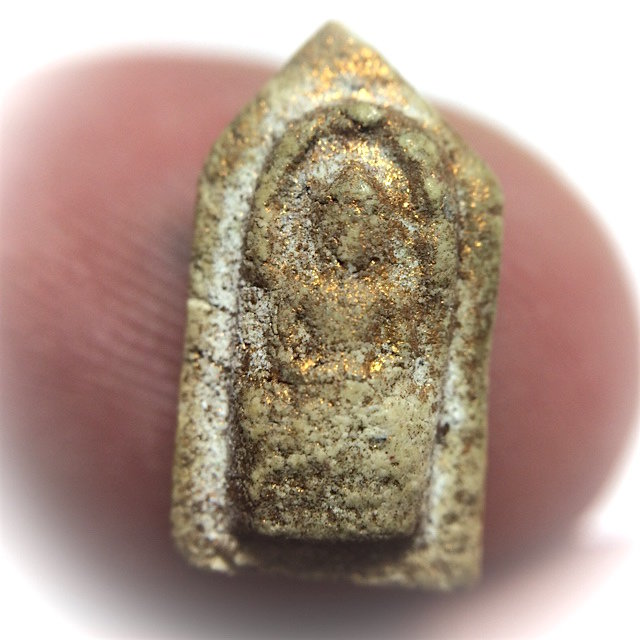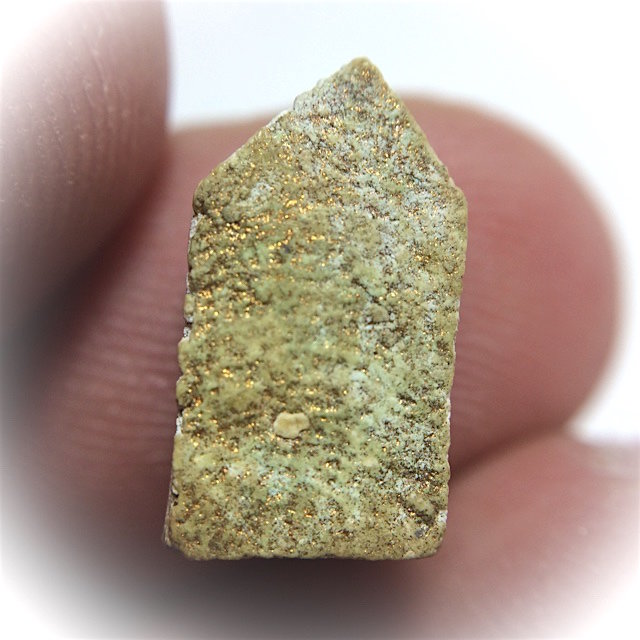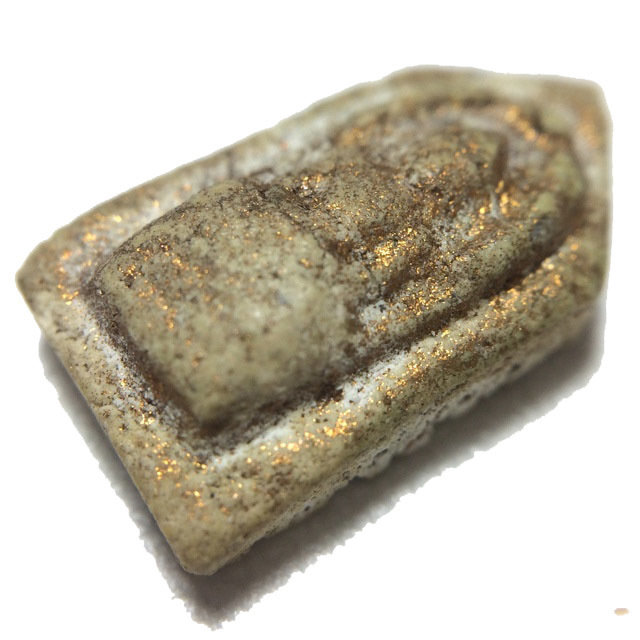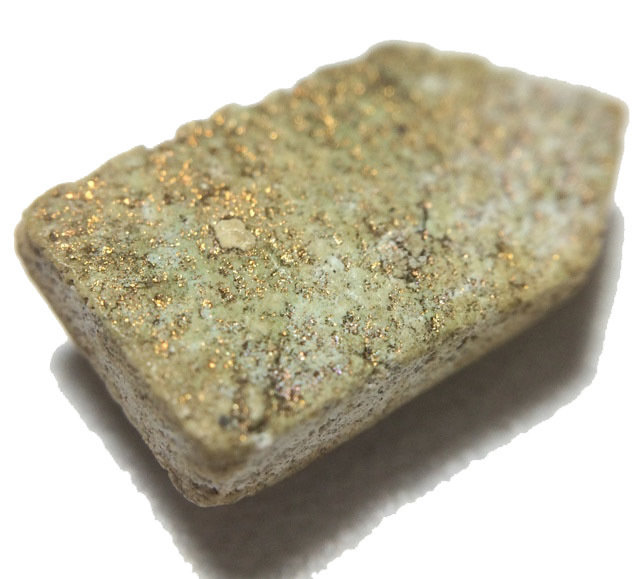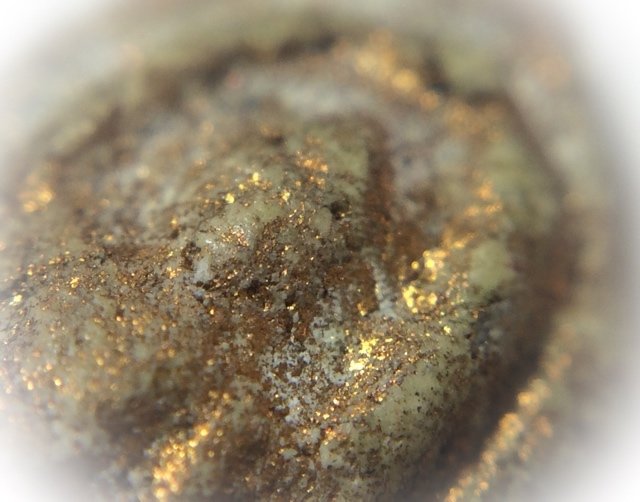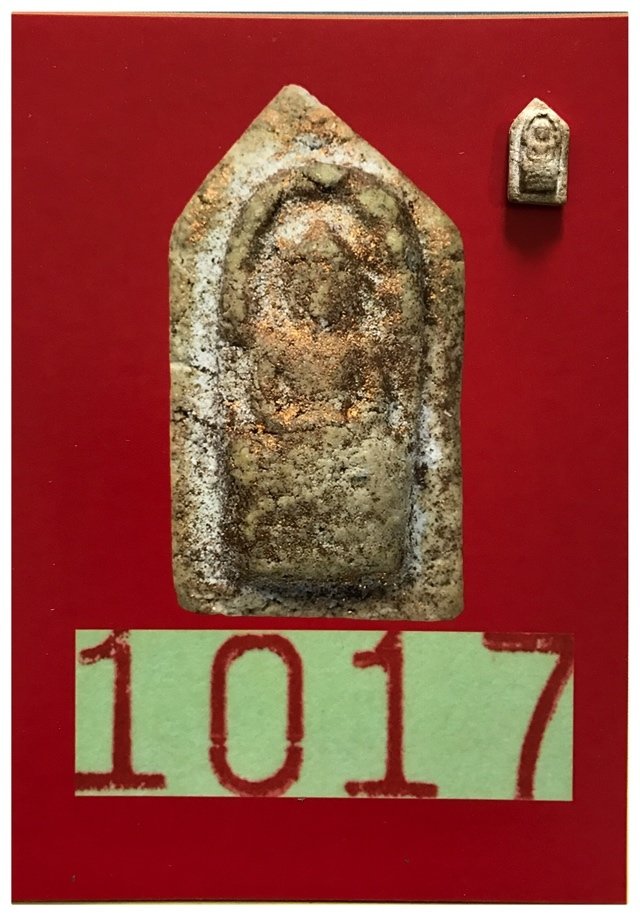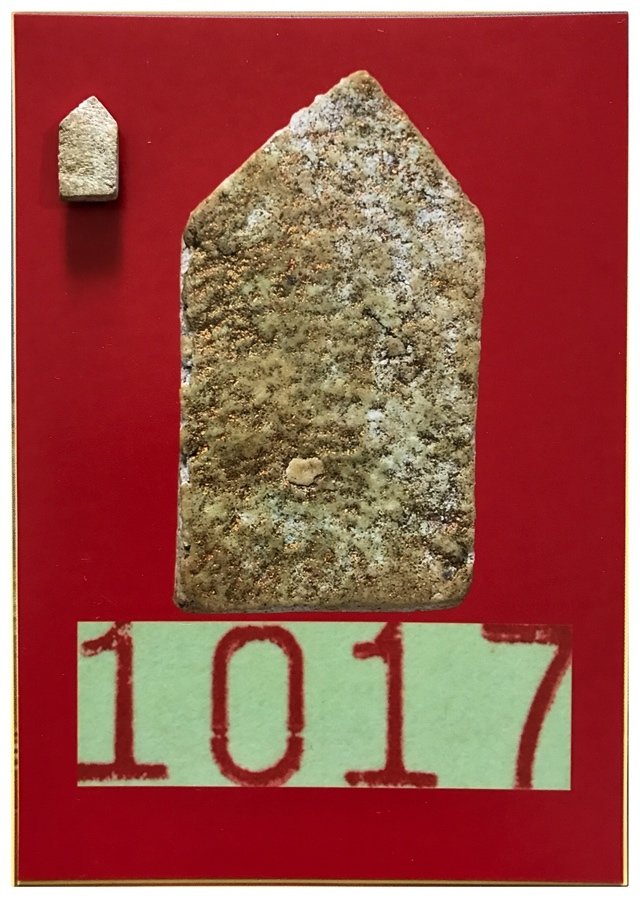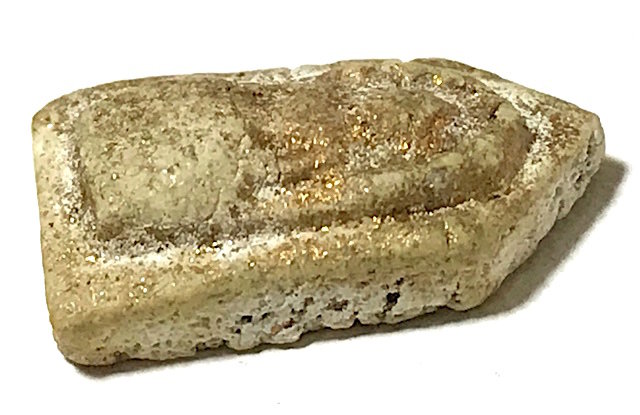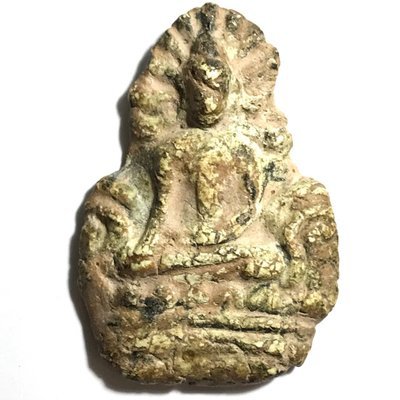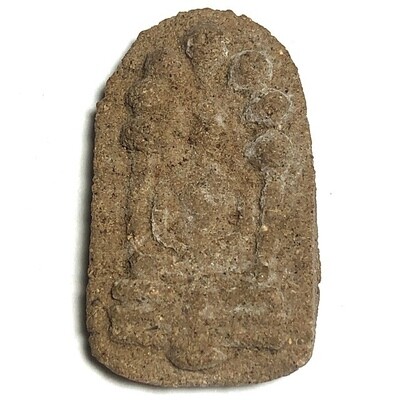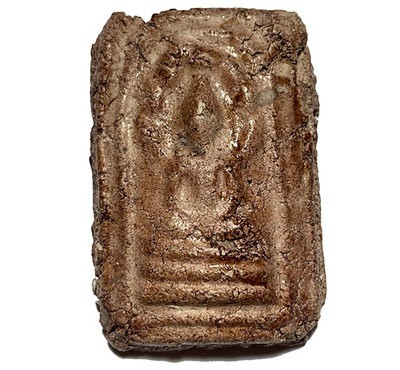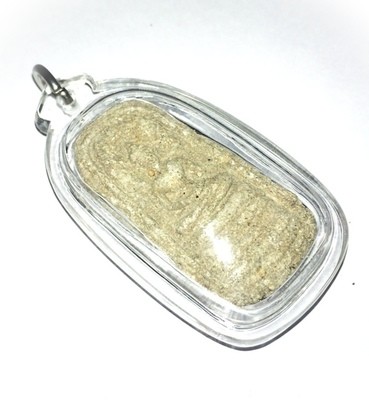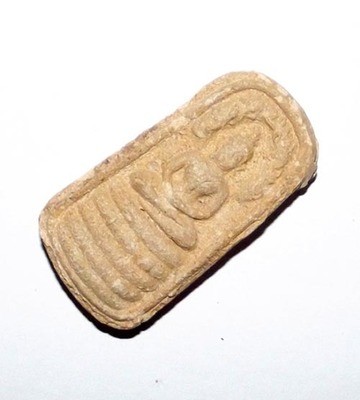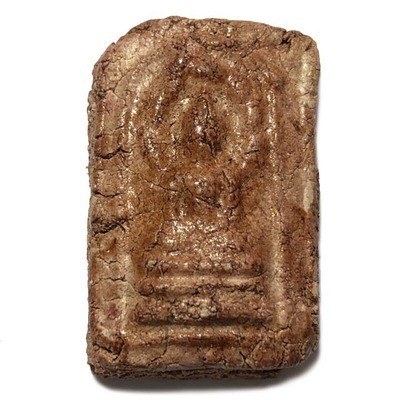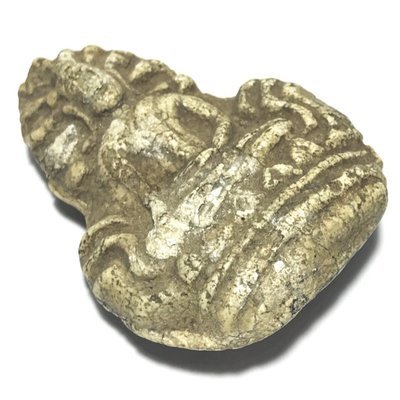A pristinely kept and extremely rare Rian Mangorn Koo Nuea Nava Loha Pim Pised Dtok Sorng Code Ma Wat Pha Nong Lom Run Sao Ha Maha Sethee 5th Lunar Saturday Blessing Ceremony Edition Guru Monk Coin, released in 2543 BE, to raise funds for the Kuti Songk Monks Huts and improve the facilities at the temple of Wat Pha Nong Lom.
This model of Rian Mangorn Koo twin dragons Monk Coin is a very rare Pim Pised (Niyom preferred) and differs from the majority of Rian Mangorn Koo Wat Pha Nong Lom Edition coins in Nava Loha, because of the double code MA stamp. Most coins of the Nava Loha series made for Wat Pha Nong Lom have only a single code Ma Stamp (on the Sangkati chest sash of the robe of Luang Phu), and only the Pim Pised special models received double code stamps. Only very few (unknown number) were distributed with double code stamp, making this not only a sacred, powerful master class amulet, but also a rare collectors piece.
The Rian Mangorn Koo of Luang Phu Hmun is, as are all of his amulets, known for the power of Jaroen Lap Wealth Increasement, and Lucky Fortunes, as well as for their Miraculous Protective Powers. Those born in the year of the dragon love to Bucha this amulet especially, for the obvious reason of the double dragon guardians.
For those with lower budgets, who seek power above collectability and rarity, we recommend to seek the Rian Mangorn Nuea Tong Daeng or Nava Loha single Code Ma, of the same edition, which carries a lower price than this special Nava Loha Pim Pised Gammagarn double code collectors edition model.
Pra Prok Bai Makham Ongk Joy Nuea Pong Prai Kumarn Luang Phu Tim Wat Laharn Rai with Authenticity Certificate
Pra Prok Bai Makham (Pra Nakprok) Pim Prok Joy Nuea Pong Prai Kumarn Long Sai Rae Tong Kam miniature Saturday Buddha (Buddha on Naga Throne with seven headed Naga canopy). A classic Pra Niyom preferred amulet of the Great Luang Phu Tim, of Wat Laharn Rai, that is an eminent member of the panteon of most highly preferred amulets of this master. The amulet comes with the authenticity certificate and memorial box given with it after certification in the first 2560 Competition at the Luead Ban Kaay Amulet Society in Rayong.
The Pra Prok Bai Makham Pim Prok Joy was pressed from the Rian Pra Prok Ongk Joy miniature Nakprok Buddha coins block press, using Pong Prai Kumarn powders which were remaining from the pressing of the Pra Pid Ta Pong Prai Kumarn of Luang Phu Tim.
The amulet comes with Certificate of Authenticity from the Samakom Luead ban Kaay Luang Phu Tim amulet association
Somewhere around 200 amulets were officially recorded as being pressed (although it is likely that more were pressed in reality). it is said that 200 were made in Pong Prai Kumarn powders, and another 200 in Bblack bailan powders from Wat Sutat temple. A third type was pressed using Nuea Pong Dam Sadta Nakae (seven Nagas admixture), which was the first ever version Luang Phu Tim made, of which around 5000 amulets were pressed.
Some Prok Joy have gold flakes affixed from the placing of gold powders into the block press and nam man nga sesame oil before pressing the powder clay into the block press, which resulted in the surface of the amulet having a very attractive sheen of gold flakes on the surface.
This exhibit is in absolutely pristine condition, which under close perusal under the eye loupe reveals the amulet to be made from a high concentrate of Nuea Pong Prai Kumarn. This is a most Powerful Muan Sarn filled with Maha Sanaeh, Maha Lap, Maha Pokasap Metta Maha Niyom. Visually, this type of sacred clay has a very soft and fluffy appearance, which further observation under the eye loupe reveals true depth and dimension, and is full of the classic characteristics of Pong Prai Kumarn powders present within the Muan sarn clay.
The Muan Sarn Sacred Powders of the various types of Pra Pong Prai Kumarn Luang Phu Tim, are renowned for their power, made from the skullbone of a Hoeng Prai. Luang Phu Tim's Pra Pong Prai Kumarn amulets are amongst the rarest and most highly sought after amulets in Thailand, and are very difficult to encounter, due to having been made in small number editions, which is nowhere near enough to provide for the masses of devotees around the world who seek such amulets.
One can see a very fluffy and rich texture to the Sai Rae golden coating on the surface of the amulet, in reaction with the Muan Sarn Sacred Powders. It is a part of the amulet appreciation society expert's method of authentication to examine and study the appearance of how the Sai Rae Tong develops in surface texture, tonality and porosity of the surface, as well as the appearance of Luang Phu Tim's famous Pong Prai Kumarn which rises up and through the surface.
The making of the Muan Sarn Sacred Pong Prai Kumarn powders Luang Phu Tim, came from the Wicha which Luang Phu had inherited through apprenticeship form one of his high Kroo Ba Ajarn, Kroo Ba Sangkh Tao, who was also his true Uncle. Part of the formula included Pong Prai Maha Phuudt, which was made from the Skull of a male Kumarn who died in the Womb, and who died on a Saturday and was cremated on a Tuesday. This is part of the ancient Khmer Necromantic Formula for Authentic Powerful Prai Occult Magic, as practiced in Ancient Times. It is said that Pra Kroo Sangkh Tao's Wicha Akom was so powerful that when he spat on the floor, the floor would crack where his spit would fall.
Due to the fact that Monks are not allowed to seek and find this Sacred and Extremely Powerful Necromantic Substance, Luang Phu would perform Korb Kroo Initiation for protection against Black Magic and the Phuudtaa Spirit Phantoms, so they could go forth to seek and find the substances to donate to him for the making of the Pong Prai Kumarn.The Initiated Lay Devotees and Apprentices to his sorcery, would then wait for the news of the right circumstances of death of Kumarn Ghosts, and go out to collect the substances and prepare them as instructed with the Wicha.
They would seek the permission of the relatives of the dead, to obtain the substances to enable the ghosts of the deceased to receive merits to free them from their Karmic residues by donation of their mortal remains to be made into amulets. They would receive the ceremonial ritual liberation of their souls from Luang Phu Tim, who would speak with the spirits of the dead to receive their acknowledgement for the process of transformation through the Nibbana Sutra, and the Muan Sarn would then be prepared according to the Dtamra Saiyasart of Necromancy, to make the Pong Prai Kumarn.
Luang Phu instructed his apprentices and the relatives of the Funerals to take care not to incinerate the whole skeleton, but to keep the skulls to bring to Luang Phu to use them for the making of the Pong Prai Kumarn. This is one of the reasons why his Pong Prai Kumarn is so powerful, because it does not contain the skeleton bone powders, rather, only those of the skulls. As a result, Luang Phu Tim's Pong Prai Kumarn has been recorded by experience of devotees to posses the highest Maha Pokasap Power of all Pong Prai Kumarn ever made, with Immense Metta Maha Niyom and Klaew Klaad Power, to induce Mercy Charm, Attract Lucky Fortunes (e.g. Lottery Winnings), and to Protect from Deadly Accidents and Disasters.
We ourselves feel that all of Luang Phu Tim's amulets (regardless of lower or higher price range), are equally Sacred and Powerful in their own way, regardless of which edition or which temple he blessed them at. But we do, as do all Amulet Appreciation Fanatics, recognise the categories of preference within the hierarchies of different editions, which is for us one of the more subtle and fascinating parts of the study of high end amulets within the collector scene, and part of the fine art of learning how to recognise and value Sacred Amulets of High Preference and Rarity. The Muan Sarn Sacred Powders of the Pong Prai Kumarn of Luang Phu Tim, are considered to be amongst the most powerful powders to empower amulets in existence.
This amulet is a wonderful opportunity for devotees who seek the true power of a world class amulet from a world class edition, and a wonderful Ongk Kroo reference study exhibit to peruse under the eye loupe. The amulet is a perfect and authentic study material, to train the eyes as to the appearance of the Muan Sarn and Surface textures of the Classic amulets of Luang Phu Tim Hence, the amulet is also a perfect 'Ongk Kroo' reference study material for students of the Pantheon, and will increase your chances of spotting an essential rarity at the right price, and without danger of risking a fakery.
We highly recommend this amulet as a sound investment and an extremely rare opportunity to obtain and be the proud owner of an authentic Wat Laharn Rai release model of the Eternal Classic Pra Prok Bai Makham Pong Prai Kumarn 2515 BE, of Luang Phu Tim. Luang Phu Tim Isarago, is of course not only one of the most highly acclaimed and sought after Guru Monks for his amulets, he is the holder of the highest esteem in Thai Buddhist amulet history for Pong Prai Kumarn powders. Luang Phu Tim, is Internationally Acclaimed, for his famous Pra Khun Phaen Pong Prai Kumarn, and Look Om powder balls. As to the classic 'Rian' type coin image amulets which have become all time favourites, and eternally, world famous classic amulets of the high end variety. His rian Jaroen Porn, and Rian Nakprok Paed Rorp are amongst the most highly sought after coin amulets of all.
The Nakprok Buddha is prayed to by all of those who were born on a Saturday, as well as all Buddhists when praying on a Saturday.
Kata Bucha Pra Nakprok
Yadtohang Pakiniariyaaya Chaadtiyaa Chaadto Naapichaanami Sanjijja Bpaanang Chiiwidtaa Wo Ro Bpedtaa Dtena sajjena So Dti Dte Ho Dtu Kappassa
The Pra Nakprok is an image of the Buddha sitting in Samamadhi (concentrative meditation), on top of a Naga, the Naga's head is raised over Buddha's to form a canopy. It is known as "Bpaang Nakprok" The Buddha remained in blissful rapture under the Acabhalanikaroda for seven days, whereupon he moved to the Mucalinda tree to the Southeast side of the Bodhi tree.
A terrible rainstorm began, pouring down on the forest for a whole seven days without stopping. Payanaga Mucalinda, who was King of the Nagas, came up from the naga Realm in the underworld and coiled himself underneath the Buddha, making a cushion seven stories high, to keep him dry.
He rose up and leaned his head over the Lord opening his neck canopy to shade the Buddha from the rain, as well as keeping watch to protect him from all sorts of parasitic, poisonous and preying animals and creatures. As the rains ceased to fall, the Naga King uncoiled and changed into a Human form and raised his hands in reverence to Buddha. In this moment, the Buddha uttered the following Kata (words);
Sukhoewiwego Dtudtassa Sudtadhammassa Bpassadtoe Abhayaabpach-chang Sukhang Loke Bpaanapuudtesuu Sanyamosukhaa Wiraakadtaa Loke Gaamaanang Smadtiggamo Asmimaanassa Winayo Edtang We Bparamang Sukhang
"Tranquility is the pleasure of he who has listened to and understood the Dharma intently, who sees conditioned things for what they really are, and does not seek to harm others. Of he who has abolished his passions and cravings, lust and desires, he who has stepped beyond all craving for sensual pleasures and endured in his efforts to do away with self conceited attitudes, has the greatest pleasure".
The statue of Buddha sitting on seven coils of the Naga King snake was created to remember this occasion of the Naga paying reverence to Lord Buddha, and the representation of him sitting on top of the coils as if seated upon a royal throne is used for two reasons; 1. Aesthetics, 2. Brahmin influence. A more authentic and historical version of this Buddha image is sometimes seen in the form of the Nagas coils wrapped around and covering the Buddha's body with four or five coils around him. The only part of the body visible being Lord Buddha's shoulders, neck and head, which is also semi enclosed by the head and canopy of the Naga leaning over him.
